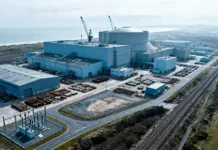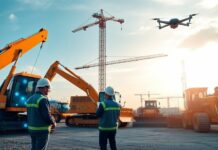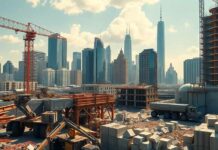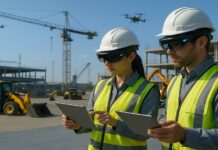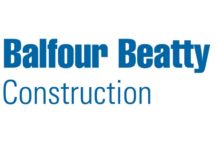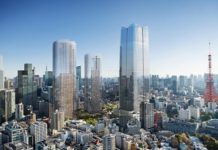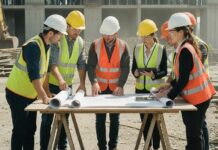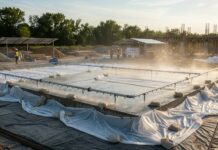Real estate has always danced to the rhythm of location and price—but lately, a new beat is stealing the spotlight. Today’s most promising investments aren’t just about zip codes or square footage; they’re built from smarter materials, sustainable blueprints, and design choices that speak to tomorrow’s needs.
In fact, according to JLL, global investment in green buildings is set to surpass $1 trillion by 2030—proof that innovation isn’t just trendy; it’s profitable.
Whether you’re eyeing a residential flip or a long-term commercial lease, understanding how construction trends influence property value could mean the difference between average returns and real growth. You’re not just buying into a space anymore—you’re investing in the way it’s made.
And that’s exactly where this new wave begins…
1. Sustainable Construction Is Fueling Long-Term Investment Appeal
Sustainable construction is no longer a niche—it’s quickly becoming the standard for smart real estate investing. Properties built with energy efficiency and eco-friendly materials aren’t just better for the environment; they also offer tangible financial advantages. LEED-certified buildings, for instance, often bring in 10% to 20% higher rental income compared to traditional properties, thanks to lower utility costs and higher tenant retention.
What’s more, green certifications like LEED in the U.S. and BREEAM in Europe are gaining traction with ESG-focused investors and tenants alike. These labels signal long-term savings, healthier living environments, and compliance with emerging regulations. Major cities such as New York, Berlin, and London are already implementing legislation that prioritizes carbon-neutral construction—nudging developers and buyers toward sustainable assets.
Even when browsing a property for sale in Spain, you’ll notice a growing emphasis on energy ratings and solar-ready features. For investors aiming to stay competitive in the years ahead, sustainability isn’t optional—it’s essential.
2. Modular and Prefab Construction Is Accelerating ROI Timelines
Speed is a serious asset in real estate—and that’s where modular and prefab construction are making their mark. With pre-assembled components manufactured off-site, developers can slash build times dramatically. That means properties hit the market faster, start generating income sooner, and deliver returns with less lag.
There’s also an economic edge. Reduced labor demands and less on-site disruption translate into fewer delays and cost overruns. For investors focused on urban infill sites or compact developments like student housing, prefab offers a streamlined, scalable approach.
Cities like Boston and Philadelphia are already scaling modular construction for residential and mixed-use projects, seeing faster turnover and improved affordability in dense neighborhoods. In the Nordics, prefab has become a go-to for sustainable, high-efficiency housing that’s both investor-friendly and resident-approved.
For anyone prioritizing timeline and efficiency, modular builds aren’t just a trend—they’re a tactical move toward faster profitability.
3. Smart Buildings Are Attracting Tech-Savvy Investors and Tenants
If location is still king, then automation might just be the new queen. Smart buildings are transforming how people live, work, and invest—thanks to embedded technologies like IoT sensors, AI-powered energy management, and predictive maintenance systems. These features don’t just look impressive on a brochure—they actively lower operating costs and increase building efficiency.
From automated HVAC to real-time security monitoring, tech-enabled properties offer a modern lifestyle that’s attracting premium tenants and retaining them longer. It’s no surprise that Class A commercial properties and luxury apartments are increasingly built with integrated tech as a standard, not a luxury.
According to Security.org, over 73% of U.S. homebuyers are willing to pay more for properties with smart features. Whether it’s a voice-activated thermostat or remote access lighting, these conveniences aren’t just perks—they’re influencing property values and future-proofing your portfolio.
Smart investments today are quite literally becoming smarter.
4. Adaptive Reuse and Repurposing Are Unlocking Hidden Value
Sometimes, the best investments aren’t new builds—they’re hidden in plain sight. Adaptive reuse is breathing life into abandoned churches, outdated factories, and vacant office buildings by turning them into residential lofts, boutique hotels, or co-working hubs. It’s a strategy that blends creativity with cost-efficiency.
What makes these projects especially attractive is their use of existing infrastructure. Less groundwork means lower construction costs, and local governments often sweeten the deal with tax credits or relaxed zoning to encourage urban revitalization.
Take Detroit’s Corktown district, where a former warehouse block has been converted into mixed-use spaces filled with retail, apartments, and cultural hubs. Not only did it reimagine the neighborhood—it sparked a wave of renewed investor interest.
For forward-thinking buyers, adaptive reuse offers a way to tap into character-rich spaces and transform them into high-yield assets with strong community impact.
5. Construction Trends Support Niche Real Estate Segments
Not every investment fits into the single-family or office park mold—and construction trends are finally catching up to that reality. Purpose-built models for niches like build-to-rent (BTR), co-living spaces, and senior-living facilities are reshaping how developers and investors approach the market. These segments are booming not because they’re trendy, but because they meet real, rising demand—and smart construction is what’s making them scalable.
What sets these builds apart is customization. Instead of retrofitting traditional designs, developers now create properties optimized for communal living, assisted care, or long-term rentals. That specificity leads to better operational flow, happier tenants, and higher occupancy rates. It’s one of the reasons institutional investors are diving into these segments—they’re chasing stable yields backed by predictable demographic shifts.
Take the rapid rise of co-living developments in cities like Austin or senior-focused micro-communities in Arizona—each one built with a clear tenant profile in mind. Construction isn’t just responding to market needs anymore; it’s anticipating them.
6. Resilient Design in the Face of Climate Change
As climate risks grow, so does the appetite for properties that can withstand them. Investors are becoming more selective about how buildings are engineered, especially in regions vulnerable to flooding, wildfires, or extreme weather. Resilient design—think fire-retardant materials, elevated foundations, and impact-resistant windows—is no longer a luxury; it’s a practical investment strategy.
These features do more than protect structures—they reduce insurance premiums and safeguard long-term asset value. In fact, properties built with resilience in mind can often qualify for lower insurance rates, and markets like Florida and California are seeing a surge in demand for such forward-thinking construction.
Consider new developments in coastal Charleston, SC, where zoning now encourages elevated, hurricane-resistant structures. These aren’t just safer—they’re more attractive to both buyers and insurers. For investors looking to hedge against future risk, design resilience is becoming just as important as location.
Conclusion
In today’s market, successful real estate investment isn’t just about what’s being built—it’s about how it’s being built. Construction trends now play a leading role in helping investors evaluate long-term value, efficiency, and risk.
From sustainability to speed, modular innovation to climate resilience, these evolving standards are more than industry shifts—they’re your next strategic edge.
Keep a close eye on tech advancements, policy changes, and design innovations. Because when the foundation is future-ready, your investment stands taller.





